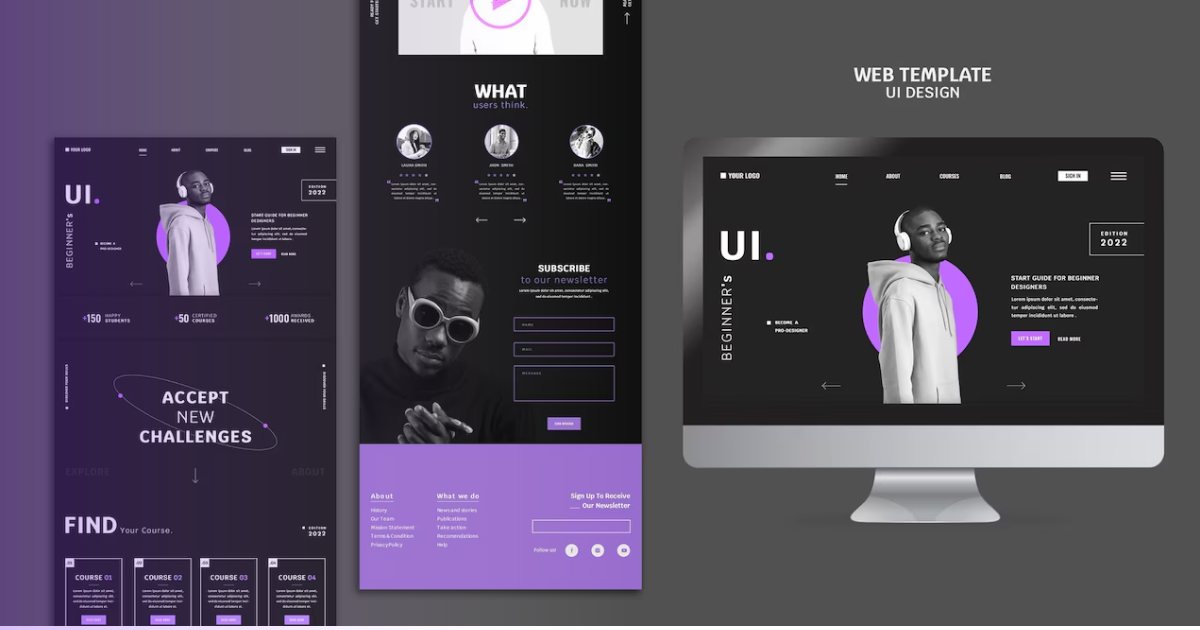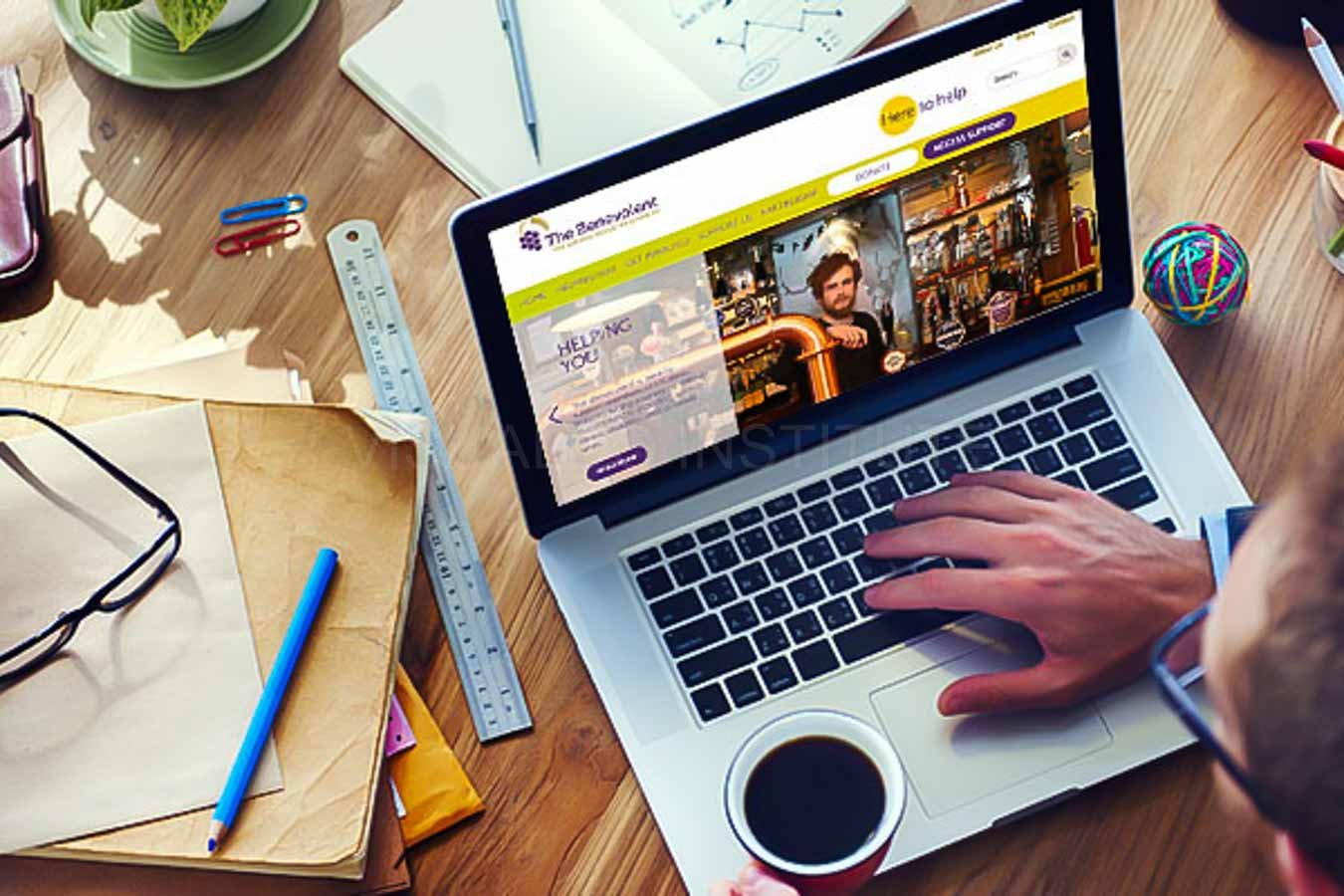The Very Best Kinds Of Web Design to Enhance Individual Experience and Interaction
In the ever-evolving landscape of electronic interaction, the effectiveness of Web design substantially influences user experience and involvement. Different layout techniques, such as minimal, responsive, and interactive formats, each offer distinct advantages that can cater to varied individual needs. Comprehending which types of Web design ideal serve these purposes can be essential for services intending to improve client complete satisfaction and retention. The inquiry remains: which layout elements absolutely resonate with users and foster meaningful engagement? The expedition of these principles discloses critical insights that might redefine your technique to website design.
Minimal Web Design
As digital landscapes come to be significantly chaotic, minimal Web layout has actually become a powerful technique to boosting user experience. This style ideology focuses on simplicity, concentrating on important aspects while removing unneeded distractions. By making use of enough white room, uncomplicated navigating, and a restricted color scheme, minimal layout fosters clearness and directs individual focus to crucial material.
The core concept of minimalist website design is to produce a seamless interaction for individuals. By decreasing cognitive load, customers can promptly realize information without really feeling overwhelmed. This direct approach not only enhances usability but also encourages involvement, as visitors are most likely to explore a site that is aesthetically appealing and easy to navigate.
Furthermore, minimal design usually emphasizes typography and images, using these aspects purposefully to share messages properly. This concentrate on necessary components can boost brand name identity and create a memorable customer experience. Essentially, minimal Web design is not simply a fad; it is a thoughtful technique that identifies the significance of user-centered style. By removing additional components, developers can develop a much more interesting, effective, and delightful Web experience for all users.
Responsive Website Design
In today's varied electronic atmosphere, receptive Web design has actually become essential for producing a seamless customer experience across a wide range of tools. As individuals gain access to websites on smartphones, desktops, laptops, and tablet computers, the capability of a site to adapt its format and content to different display dimensions and resolutions is vital.
Responsive website design employs flexible grids, images, and CSS media questions to make certain that Web material is presented ideally, no matter the tool made use of. This approach not only boosts the visual appeal of a site but likewise dramatically enhances use. Customers are most likely to involve with a site that offers a regular experience, as it gets rid of the irritation of needing to zoom in or scroll exceedingly.
Furthermore, search engines, consisting of Google, focus on mobile-friendly sites in search rankings. By taking on receptive style, businesses can boost their presence and get to a wider audience. This technique likewise streamlines web site maintenance, as a single version of the site can deal with all gadgets, lowering the demand for several variations. In summary, responsive Web design is a basic technique that enhances user experience, involvement, and overall contentment.
Interactive Website Design
Responsive Web style prepares for enhancing customer experience, yet interactive Web layout takes this an action even more by involving individuals in an extra dynamic method - Aligned Position Web Design. By incorporating elements such as computer animations, clickable prototypes, and real-time feedback, interactive website design mesmerizes users, attracting them into a richer surfing experience
This method not just fosters interaction but additionally encourages individuals to discover content proactively instead of passively consuming it. Strategies such as gamification, where customers earn benefits for finishing jobs, can considerably improve the time invested in a site and boost general contentment. Interactive attributes can streamline complicated information, making it extra digestible and delightful.

Including interactive design elements can additionally bring about higher conversion rates, as customers are a lot more likely to engage with a website that proactively involves them. Aligned Position Web Design. Eventually, interactive website design transforms individual experiences right into memorable journeys, making sure that visitors return time and once again
Apartment Design
Characterized by its minimalistic method, level layout stresses simpleness and capability, removing unnecessary components and focusing on vital functions. This style ideology focuses on use, guaranteeing that customers can navigate interfaces easily and effectiveness. By using a clean aesthetic, level layout gets rid of the mess frequently found in much more ornate designs, thus enhancing customer concentrate on material and performance.
The trademark of flat design exists in its use vibrant colors, easy typography, and geometric shapes. These components add to a visually attractive interface that is both modern-day and friendly. Furthermore, flat design fosters a sense of clarity, allowing individuals to determine crucial activities and info without diversion.
Moreover, flat style is particularly reliable in responsive Web design, as its simplicity converts well throughout various gadgets and screen dimensions. By concentrating on necessary features, level design not just fulfills user requirements but additionally encourages smooth interaction, making it an important part of reliable Web style strategies.
Adaptive Website Design
Flexible find out website design customizes the individual experience by developing several dealt with layouts customized to various screen sizes and gadgets. Unlike receptive design, which fluidly readjusts a single design, adaptive layout utilizes distinctive layouts for certain breakpoints, guaranteeing ideal discussion on different platforms. This strategy enables designers to concentrate on the one-of-a-kind qualities of each gadget, improving functionality by delivering exactly what individuals require based on their context.
One of the primary advantages of flexible website design is its capability to enhance load times and performance. By offering customized material and images that fit the customer's tool, web sites can lessen data usage and boost loading rates. This is especially useful for individuals with slower connections or minimal information plans.

Furthermore, flexible style facilitates a much more controlled and regular branding experience. Since developers create several layouts, they can make certain that the visual components align with the brand name's identification throughout various platforms - Aligned Position Web Design. This causes a cohesive customer experience, boosting look at this web-site interaction and advertising individual retention
Final Thought
Finally, the assimilation of minimal, responsive, and interactive website design concepts considerably boosts customer experience and engagement. Minimalist layout cultivates clarity and focus, while receptive layout makes certain adaptability across various devices, promoting ease of access. Interactive style astounds customers through dynamic elements, motivating exploration and customization. Jointly, these layout comes close to add to the production of straightforward settings that not only improve complete satisfaction yet additionally drive greater conversion prices, emphasizing their essential relevance in modern Web design strategies.

Minimalist design fosters clearness and focus, while responsive style makes sure versatility throughout numerous tools, advertising access. Jointly, these layout comes close to add other to the production of straightforward settings that not just boost satisfaction yet also drive higher conversion rates, emphasizing their crucial value in contemporary Web design methods.